#1979
Junkyard Find: 1979 Alfa Romeo Spider Veloce
Alfa Romeo Spiders weren't especially difficult to find in American car graveyards as recently as 15 years ago; I saw perhaps one for every three MGBs or Fiat 124 Sport Spiders during my junkyard travels back then. Today, the MGBs and 124s keep showing up in Ewe Pullets just as they always have, while I might find one discarded Alfa Spider every few years. Here's the latest one: a '79 in a yard (on the aptly named Dismantle Court) just to the east of Sacramento, California.
Junkyard Find: 1979 Lincoln Continental Town Car
1979 was the final model year for genuinely enormous Lincoln sedans, with the mighty Continental moving to the Panther platform for 1980. Today's Junkyard Find, found in a Colorado car graveyard recently, is one of those era-ending Continentals.
Junkyard Find: 1979 Volvo 245 DL With 338,475 Miles
Ever since I began my effort to document some of the interesting machinery that shows up in car graveyards, the quantity of discarded Volvo 240s has remained steady. Back in the late 2000s, I’d had an idea that just about every 240 owner would make the transition from safe and sensible Swedish bricks to green and sensible Japanese hybrids, and that the transition would be wrapped up by the dawn of the 2020s. Such has not been the case, although the 1970s 240s are getting harder to find. Here’s a high-mile 245 in a mile-high junkyard.
Junkyard Find: 1979 Fiat Brava Sedan
While an ever-increasing number Americans in the second half of the 1970s felt comfortable buying sporty German and Japanese sedans, the idea of relying on an Italian sedan for everyday transportation made sense to a much more exclusive group. For those Americans who craved a commute packed with Italian passion and artistry but needed something with rear-wheel-drive (ruling out the 128 and the Lancia Beta sedan) and cheaper than the Alfa Romeo Sport Sedan, Fiat offered the 131 on these shores for the 1976 through 1981 model years (changing its name to the Brava starting in 1978). As you’d expect, these cars are about as tough to find in junkyards today as Mitsubishi Tredias or Rover 3500s, but I ran across this ’78 in a Denver yard last week.
Junkyard Find: 1979 Dodge Colt With Twin-Stick Transmission
Chrysler’s run of selling rebadged Mitsubishis began way back in 1970, when the rear-wheel-drive Colt Galant arrived here for the 1971 model year. Those cars sold very well in North America, with sales continuing through 1978. After that, Colt badges went onto the front-wheel-drive Lancer Fiore (later sold here as the Mirage). Here’s one of those first-year FWD Colts, found in a Denver-area yard in nice condition and equipped with the extremely cool Twin-Stick dual-range transmission.
Junkyard Find: 1979 Mercury Cougar XR-7
Junkyard Find: 1979 Fiat 124 Sport Spider
Junkyard Find: 1979 MG Midget
BMC and then British Leyland churned out MG Midgets and near-identical Austin-Healey Sprites for 20 years, with the final example coming off the Abingdon line in 1980. Because project-grade Midgets still clutter garages, driveways, yards, and fields throughout the land and they’re not worth much, the clock runs out for many of them every year.
The next stop, usually, is among the Sephias and Jettas of the IMPORTS section at a self-service wrecking yard. Here’s a forlorn ’79 I spotted last week in California.
Junkyard Find: 1979 Oldsmobile Cutlass Supreme
Junkyard Find: 1979 Ford Mustang Coupe
Junkyard Find: 1979 Fiat 124 Sport Spider
For as long as I have been poking around in American automobile graveyards (35 years), the presence of the occasional Fiat 124 Sport Spider has been a constant. Even while Pininfarina-badged, Malcolm Bricklin-imported 124 Sport Spiders were still available as new cars in the United States, I was seeing 20,000-mile late-70s examples about to be crushed.
Nowadays, most of these cars show signs of decades-long outdoor storage after awaiting restorations that never came. Here’s an extremely rough and rusty one that I spotted in a San Francisco Bay Area yard a couple of months back.
Junkyard Find: 1979 Audi 5000
Before the Audi 5000 (the 100 or 200 outside of the US market) became notorious for playing the lead role in the first unintended acceleration fiasco (technically, the Ford “park-to-reverse” fiasco involved unintended shifting, not acceleration), it was known as an expensive, luxurious German car purchased by a handful of car-savvy California orthodontists. Sales of the first-generation 5000 began in the 1978 model year, so this high-mileage ’79 is a rare one. I spotted this lil’ beige devil in a Denver-area self-service yard last week.
Junkyard Find: 1979 International Harvester Scout
Is it fair that I photograph just about every reasonably intact International Harvester Scout that I see in wrecking yards, while ignoring nearly all air-cooled Volkswagen Beetles that I find in the same yards? Probably not, though I’m making an effort to shoot the more interesting Beetles now. No matter what happens with Beetles in this series, though, when I see a Scout in the junkyard, I’m going to document it.
Junkyard Find: 1979 Ford Granada Sedan
I took my first driver’s test, in 1982, in a loathsome ex-rental-car 1979 Ford Granada sedan, a car that made my beige 1969 Toyota Corona sedan seem both fun to drive and cool by comparison. Since that time, it makes me happy each time I see a pre-Fox Platform Granada (or its Mercury sibling, the Monarch) in the junkyard. Where it belongs.
Junkyard Find: 1979 Oldsmobile Ninety-Eight Regency Coupe
The greatest Oldsmobile song of all time is Public Enemy’s 1987 masterpiece, “ You’re Gonna Get Yours” (from all the many great Oldsmobile songs out there), but just what kind of Olds 98 was it that Chuck D used to get all those suckers to the side? I say it was the 1977-1984 tenth-generation 98, and here’s an example of a luxurious ’79 Regency Coupe, complete with landau roof and plenty of fake wood trim inside.

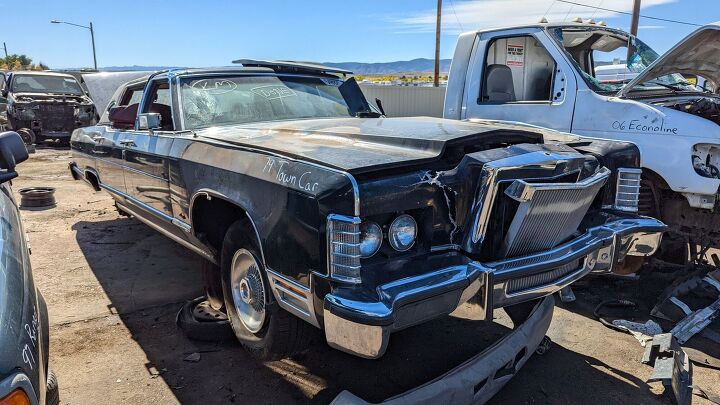

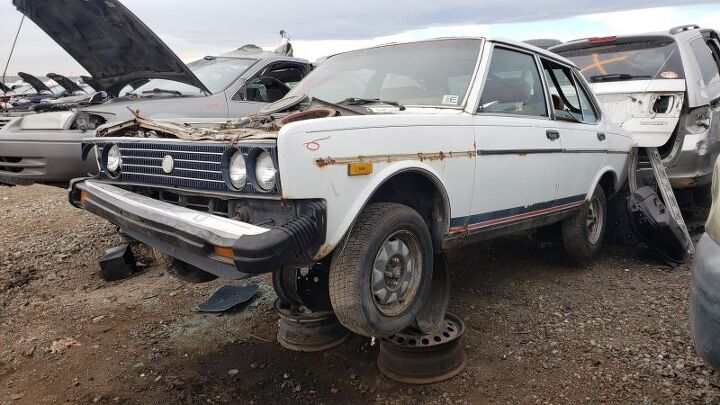

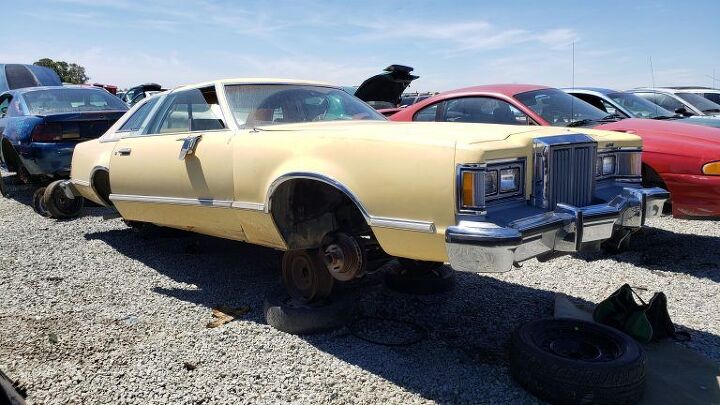
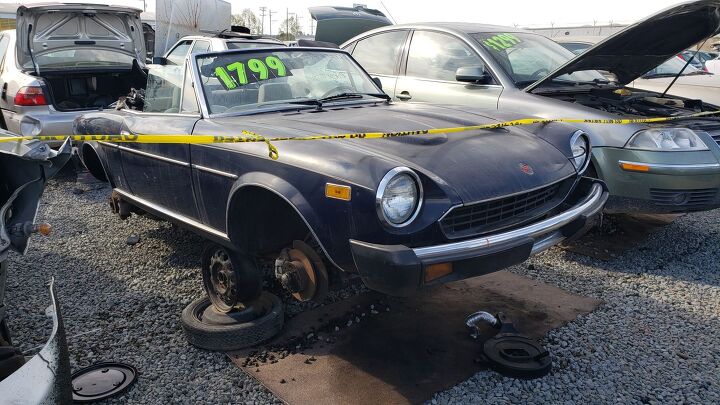


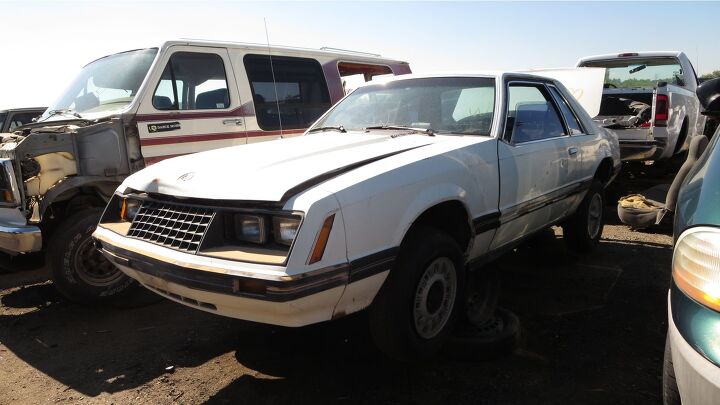

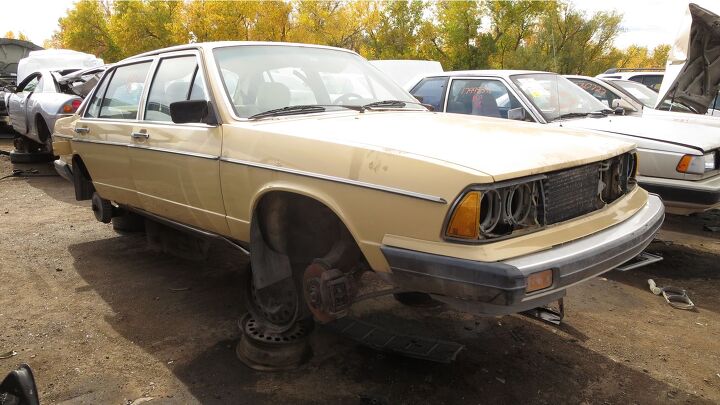

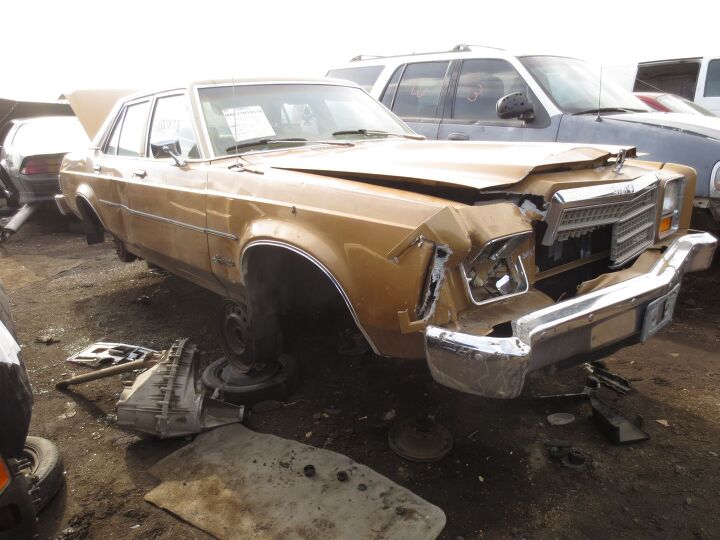
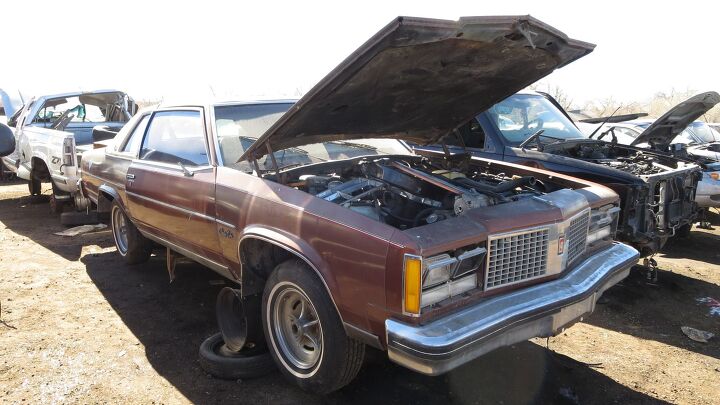












Recent Comments